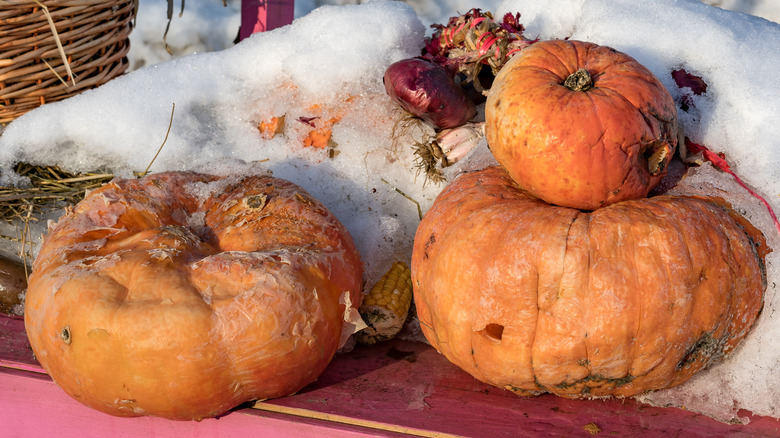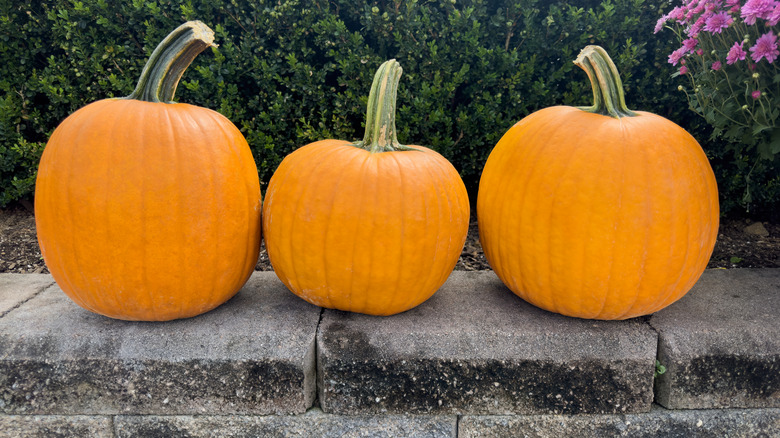How Long Will Pumpkins Last After You Harvest Them From The Garden?
Carving an epic Halloween pumpkin design with a drill is a fun yearly project. But pumpkins have more to offer than a few days of terrifying scowls. They are the foundation of holiday pies and perfect for many other savory dishes deep into winter. Whether you grow your own little patch or go purchase pumpkins at a farm, they are a durable and robust fruit. After harvesting, ripe pumpkins can last two to three months if stored properly and stay whole and uncarved. And then, if you puree pumpkin and freeze it in an airtight container, you've just added another three months to its usability.
But before you harvest them, pay attention to some telltale signs to ensure your pumpkins are ripe. If their skin is still shiny and reflects a lot of light, it's premature to pick them. Instead, you'll want to see more of a matte finish. The rind should also be quite hard. We're not used to everyday fruits having a skin that's hard as a rock, but here, that's a good thing, and pumpkin skins should feel tough. As you're choosing ripe fruit, only pick pumpkins with 1 to 3 inches of a fully attached stem. If the stem is coming off anywhere, that hastens the ripening process — that's okay, but know that you'll need to consume it within a few days versus a few months. To maintain their longevity, don't transport them by the stem.
Storing pumpkins the right way so they last
Ripe harvested pumpkins will benefit from sunbathing for 10 days. Even if it's cool outside, the sun's rays will toughen that rind even more. That hardened rind strengthens the fruit's defenses against decay and any creatures that might like an overnight pumpkin snack. Pumpkins can survive a frost, but you might want to cover them at night if it's cold.
After their sunbathing experience, submerge the pumpkins in a gallon of water diluted with 1 to 2 tablespoons of bleach to prevent mold growth. Store them at around 60 degrees and no more than 50% humidity without stacking them; if a barn, attic, basement, or shed meets these conditions, it's the perfect storage facility. When they start to decay, pumpkins can leak from the underside. You don't want that on a surface or fabric you care about, so store them on plastic. Check for leakage every two weeks, and don't consume pumpkins that show any signs of rot. If you're thinking ahead, save leftover pumpkin seeds for planting next year.

